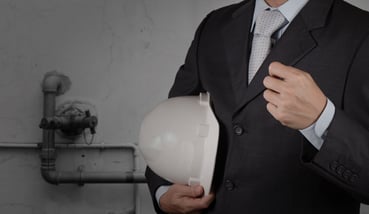As a Facilities Management company, what are your responsibilities when it comes to the control of waterborne pathogens such as legionella (amongst others)?
Well, it may be as simple as what is written in the contract you have from your water hygiene company describing the delivery of certain tasks, but is that it?
In short no, there are many other tasks that you are required to do that don’t always get directly specified but without which you cannot provide any assurance that you have fulfilled your side of the contract.
In this blog, we talk about some of these, sometimes hidden tasks, as well as what is included in any contracts you have.
Legionella Control - where to start?
To start with it is very important to ensure you understand exactly what you are being asked to do, if there are areas of ambiguity these should be resolved before you start the contract. If your organisation is a member of the Legionella Control Association the first commitment you make is to ensure that your clients are aware of their obligations under ACoP L8, HSG 274 and any other applicable guidance, such as (S)HTM 04-01- Safe Water in Healthcare premises or (S)HTM 01-05.
A clear and concise document should be produced confirming who is responsible for carrying out each task so that nothing is missed. If you employ Water Treatment / Water Hygiene companies to help you deliver part of the works, they too should be named in this document.
 Prior to starting works, the next priority is agreeing the method for completing each task and providing evidence the works are going to be completed by competent staff.
Prior to starting works, the next priority is agreeing the method for completing each task and providing evidence the works are going to be completed by competent staff.
On many occasions we find that some basic water hygiene training has been completed by staff (whether they are directly employed by you or by a sub-contractor) but with no evidence of competence.
The guidance documents use the term “competent” rather than “trained” for a reason, being trained to a standard is important but you need to be able to carry out the work to this standard and in a safe manner. Please ensure you can provide evidence in the form of water safety records in the event you are inspected by the HSE or any other bodies who deem this necessary.
Why should you complete a Legionella Risk Assessment?
A Legionella risk assessment for the property should be carried out to identify the assets on site, the risks associated with them, and the pre-planned maintenance that is required. Once the schedule of pre-planned maintenance tasks begins the findings should be reviewed and actions taken if the results fall outside the recommended ranges.
A formal review meeting with your client should be held regularly (depending on the risk profile and compliance data) where you are able to discuss the system performance and ensure appropriate works are completed if non-conformances are identified.
We at the Water Hygiene Centre provide external support to many Facilities Management companies as Legionella Risk Assessors or Authorising Engineers (Water) across the UK. This puts us in a position to provide additional assurance to FM companies that you are doing what is required and highlighting any areas of weakness before any significant failures occur.
This also gives the building owner an independent view on performance following the annual Water Safety Audit where all measures and results are reviewed in order to provide the site with a comprehensive summary of compliance and water safety.
Feel free to reach out if you have any questions about this blog or if you would like to consult with one of our experts for further advice on water hygiene.
Editor’s Note: The information provided in this blog is correct at date of original publication – October 2021. (Revised August 2024).
© Water Hygiene Centre 2024









